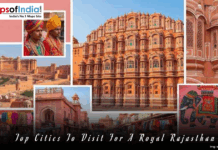The Gartang Gali, nestled among the rugged terrains of the Himalayas, is a testament to centuries of trade, cultural exchange, and geopolitical dynamics between India and Tibet. This ancient trade route has witnessed the ebb and flow of goods, ideas, and people for centuries, connecting the lush landscapes of Himachal Pradesh in India with the lofty plateaus of Tibet.
Historical Origins
Gartang Gali dates back to ancient times when trade between India and Tibet flourished along well-established routes. The Silk Road, a network of trade routes connecting the East and West, extended into the Indian subcontinent. Gartang Gali emerged as an essential link in this complex web of trade routes, facilitating the exchange of goods, ideas, and cultures.
Trade Dynamics
Gartang Gali served as a conduit for a wide variety of commodities from India, including spices, textiles, precious stones, and medicinal herbs. At the same time, Tibet contributed items such as wool, salt, and unique handicrafts. The route was critical in sustaining both regions’ economies, fostering economic interdependence and cultural exchange.
Salt was a major commodity traded along Gartang Gali. Tibet, a landlocked region with limited natural salt resources, relied heavily on the salt flats of western Tibet and India’s Himalayan regions. As rulers sought to control and profit from this valuable resource, the salt trade became a primary economic driver, influencing the geopolitical landscape.
Cultural Exchange
Gartang Gali’s facilitation of cultural exchange extended beyond material goods. Ideas, religious beliefs, and artistic influences flowed freely along this ancient route. Buddhism, which had taken root in India, went to Tibet via these trade routes. Monasteries and religious centers along the route became cultural exchange points for scholars, traders, and pilgrims.
This cultural fusion is reflected in the architectural landscape along Gartang Gali, with monasteries and shrines influenced by Indian and Tibetan traditions. The intricate carvings, vibrant murals, and distinctive architectural styles are tangible reminders of the region’s cross-cultural interactions.
Decline and Revival
As time passed, the geopolitical landscape changed, and the significance of Gartang Gali faded. Modern transportation and trade routes have primarily replaced the ancient paths, reducing the historical trade route’s importance. However, a renewed interest has been in revitalizing and preserving Gartang Gali’s heritage in recent years.
Tourism has emerged as a potential catalyst for Gartang Gali revitalization. The allure of exploring ancient trade routes, experiencing cultural diversity along the way, and admiring the natural beauty of the Himalayan region has captivated both travelers and historians. Efforts to conserve and promote Gartang Gali as a cultural and historical heritage site have gained traction, with local communities and governments working together to ensure its survival.
Conclusion
Gartang Gali is a testament to the enduring ties between India and Tibet, echoing the footsteps of centuries of traders, pilgrims, and scholars who traversed its difficult paths. With its rich tapestry of trade, cultural exchange, and geopolitical dynamics, this historical trade route continues to captivate the imagination of those seeking to understand these two regions’ interconnected histories.




